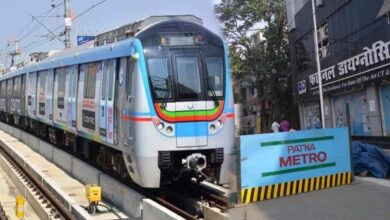How Patna Metro Plans To Redefine The Capital City | Recent Upadate 2023 | Routes and Fair List
The Patna Metro project, initiated in 2019, represents a transformative step towards addressing these challenges. The report explores the key features of the metro project, its proposed corridors, and the role it aims to play in elevating the city's economic and transit dynamics.

Bihar’s capital, Patna, grapples with developmental challenges, including low urbanization, inadequate infrastructure, high unemployment, and poor civic and educational standards. In this context, the ongoing Patna Metro project emerges as a significant initiative, promising to reshape the city’s economic landscape and transit patterns. This report provides an in-depth analysis of the project’s current status, its potential impact on the city, and the expectations of the residents.
The first phase of the Patna Metro project, managed by the Delhi Metro Rail Corporation (DMRC), includes two corridors—East-West and North-South—spanning a total distance of 31.5 km. The metro’s construction is underway, with Corridor-1 set to be operational by 2025 and Corridor-2 by 2026. The report details the routes, stations, and the potential impact on Patna’s urban infrastructure.
One of the project’s key objectives is to seamlessly connect crucial regions of Patna, including the new ISBT, Patna Junction, and major educational institutions. The report discusses how the metro network is designed to act as a comprehensive integration, enhancing transit convenience for residents and facilitating the city’s incremental expansion.
Impact on Current Transit Patterns:
The report assesses the current state of Patna’s transportation, dominated by e-rickshaws and auto-rickshaws. It highlights the challenges posed by the lack of regulated public transportation and discusses how the introduction of the metro is expected to alleviate these issues. Insights from city officials and experts emphasize the importance of coordinated efforts to support the metro effectively.
Expectations and Challenges:
As the metro project progresses, the report delves into the expectations and challenges faced by the city and its residents. While excitement and optimism prevail, immediate challenges such as construction-related disruptions, severe congestion, and limited accessibility are acknowledged. The report provides a balanced view of the city’s anticipation for the operational metro and the potential long-term benefits.
Anticipation for Operational Metro:
Residents, auto-rickshaw drivers, and students share their views on the upcoming metro, expressing anticipation for positive transformations in daily commuting, commerce, real estate, and employment opportunities. The report highlights the shared sense of excitement and the role the metro is expected to play in enhancing the quality of life for Patna’s residents.
The Patna Metro project signifies a pivotal moment in Bihar’s capital, offering a pathway to address longstanding developmental challenges. As the city prepares for the operational metro, the report concludes that while challenges exist, the transformative potential of the project sparks optimism for a brighter future for Patna and its residents. The metro project is poised to be a catalyst for progress, bringing economic development and improved transit infrastructure to the heart of Bihar.

I’m Shweta Bharti, and I’m not just a blogger; I’m a storyteller with an unending love for Bihar. Bihar is not just my home; it’s my muse. I was born and raised in the heart of this culturally rich state, and that’s where my journey as a writer began.My passion is to share the beauty and depth of Bihar through my words. Bihar isn’t just a place; it’s a treasure trove of history, traditions, and untapped potential. Through my blog, BiharLinks.com, I aim to change perceptions and uncover the hidden gems of Bihar.
